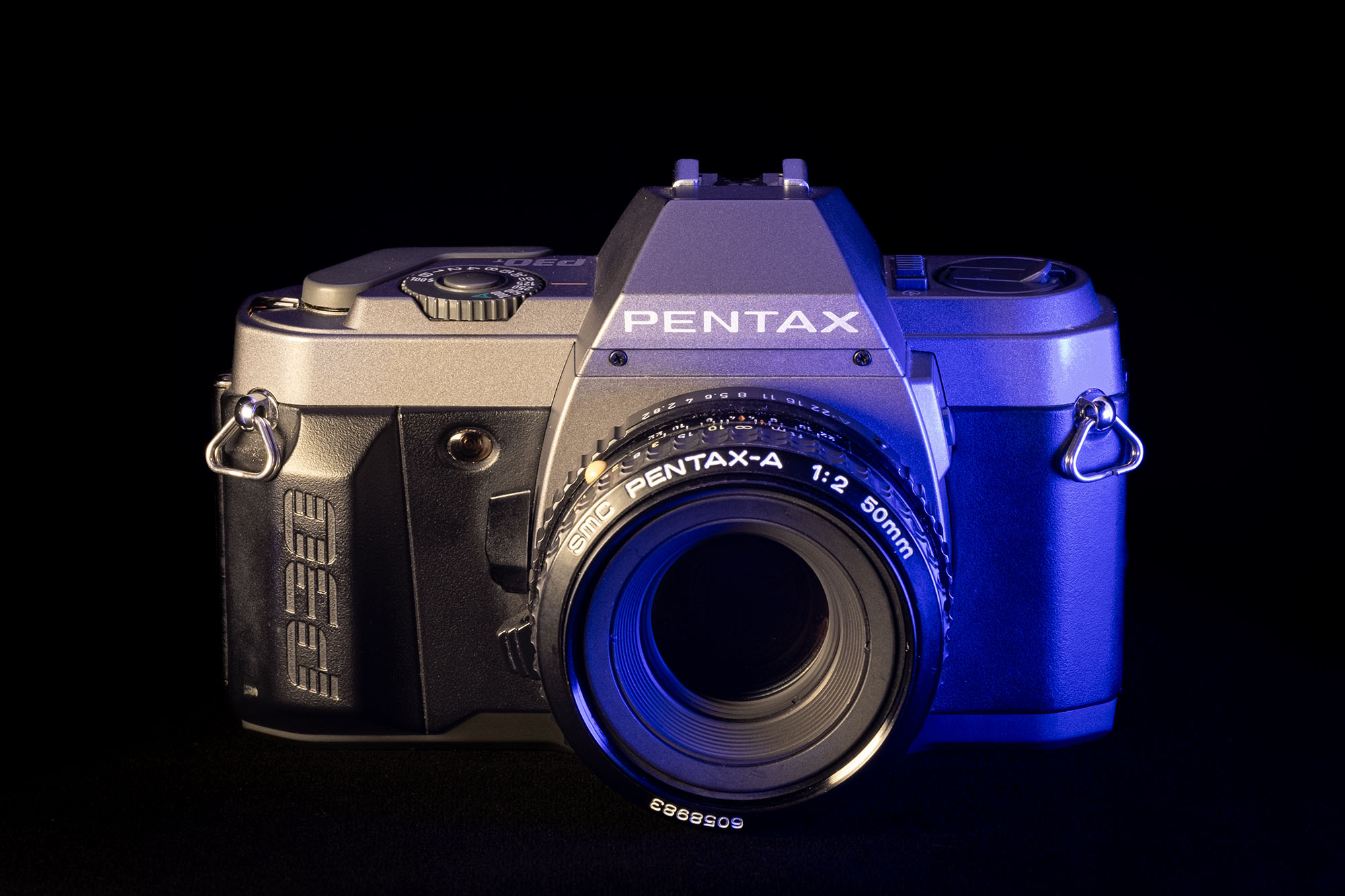Last week I was in Asheville, North Carolina, eating some extraordinary barbeque. The cost of that dinner for two was typical for decent brisket, and in no way exorbitant. Still, it was about the same as the typical cost of a Pentax P30t (with a lens) on the big auction site. Consider for a moment that the Pentax is not fattening, doesn’t cause heartburn, nor does it stain your clothes. It should provide pleasure for years rather than minutes.

The Pentax P30t is a fun little camera, and in my opinion, a bit of an underdog. I am surprising myself by even admitting that. It is plastic and electronic, both of which lie outside my preferred type of camera. Even though it’s a camera with more than the basic set of features, it seems to be relatively unappreciated.
Introduced in 1990 as an evolutionary step in the P30 lineup, it is a relatively recent consumer-grade manual-focus camera with simple, but more modern electronics. I consider early electronic cameras of any brand suspect, as components and circuitry will fail over time. For somebody seeking an affordable manual focus camera, with 1990s electronics and a fair set of features, this camera fits those criteria.
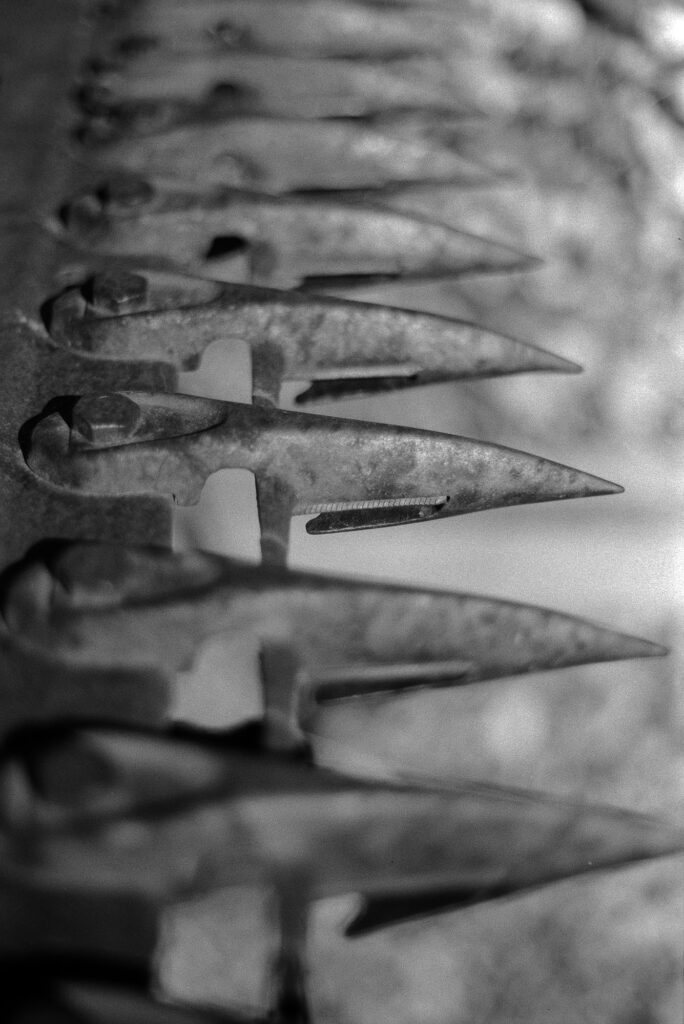
I don’t recall ever handling one until this one came along in a mixed bag. Judging from its plastic exterior, I would expect a cheaply made camera with little handling appeal. I would also be wrong. Yes, it is plastic, but it seems much better built than my initial expectations led me to believe. I must remind myself that the science of plastics had been evolving as well, and some of these cameras have held up quite well.

Controls are intuitively located, and easy to find without looking. Across the top, from left to right, we first find the rewind knob. It has the traditional design, except it is flush with the camera body around it rather than protruding. Then we see the master switch, with off/on settings. This is also the location of the self-timer switch. It is a button just forward of the off/on switch, and it is engaged by holding the button down while sliding the off-on switch fully forward. This can easily be done with one finger in one motion.
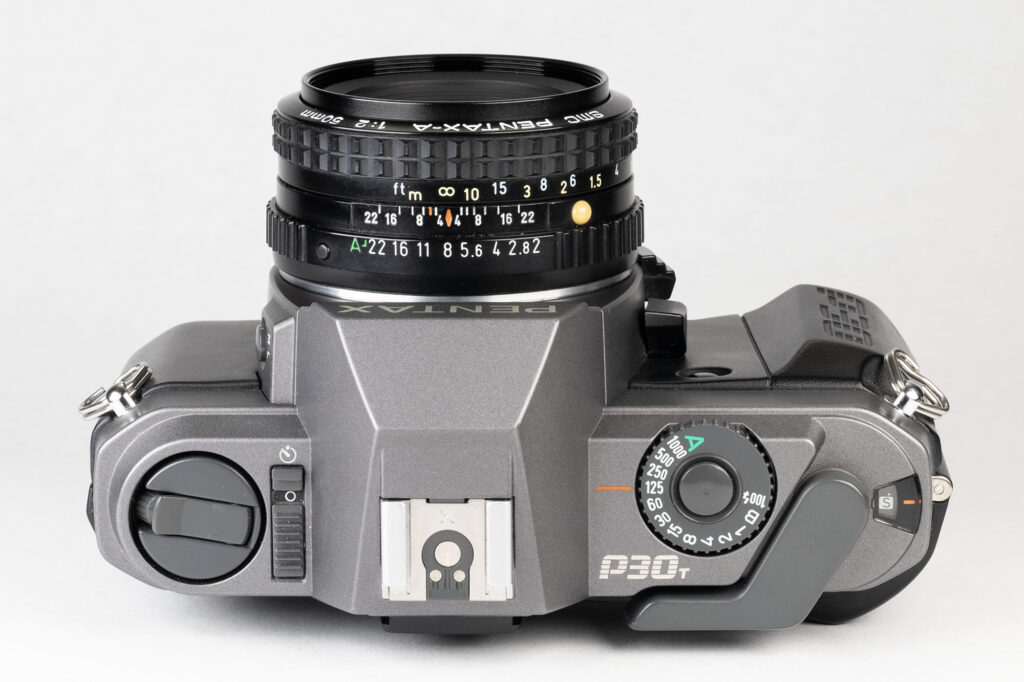
On the pentaprism there is a traditional hot shoe, with contacts for dedicated flash. Right of that there is simply the shutter speed selector dial, shutter release, film advance lever and the frame counter. Initially I feared that the plastic film advance lever would be the weak point, but then I saw that it is reinforced with a metal skeleton underneath.
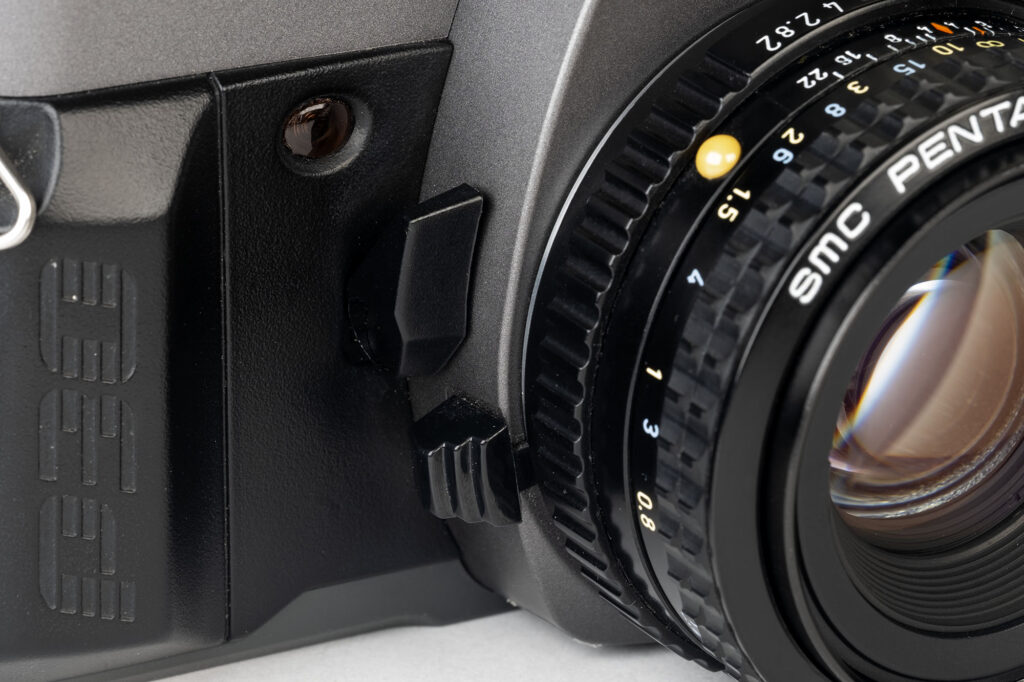
Around the lens mount we have three controls, other than the lens release lever. There is a depth-of-field preview lever, which temporarily closes the aperture. There is also a threaded shutter release socket, for using a cable release. Above that there is a button simply labeled “ML”. This is the exposure memory lock button.
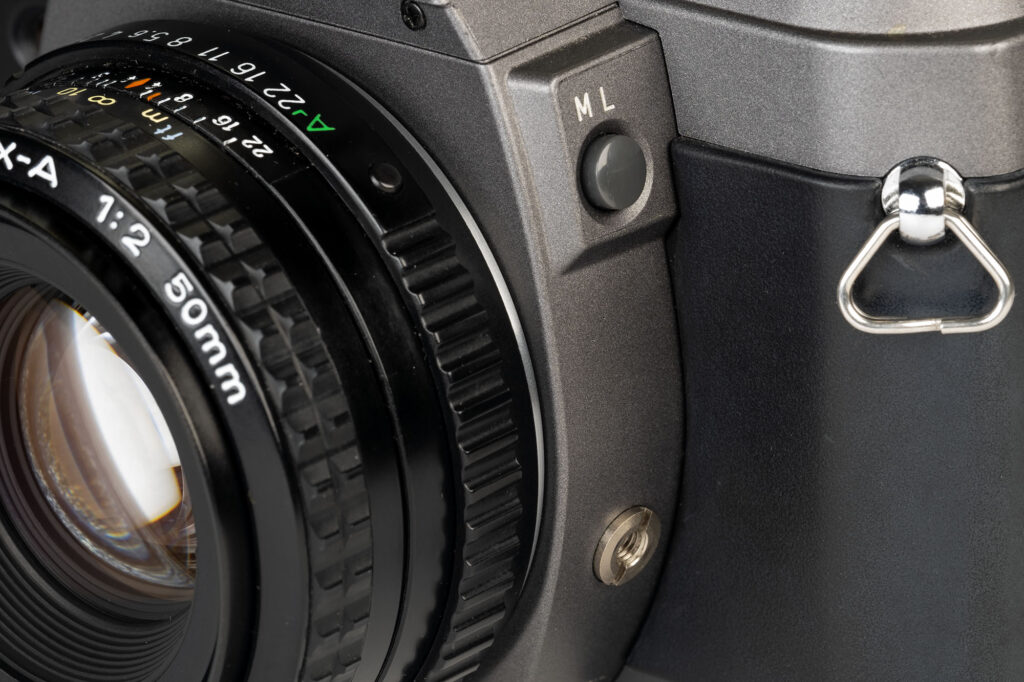
Upon pressing this button, the exposure values are locked in, allowing the image to be re-composed without affecting exposure. Some lighting situations may fool the meter, resulting in an under- or overexposed subject. An example would be when there is a particularly light or dark background. In this case, a close-up meter reading can be taken from the subject or a gray card. While taking the reading, the ML button is pressed then the image recomposed. This function only works in the automatic exposure modes.
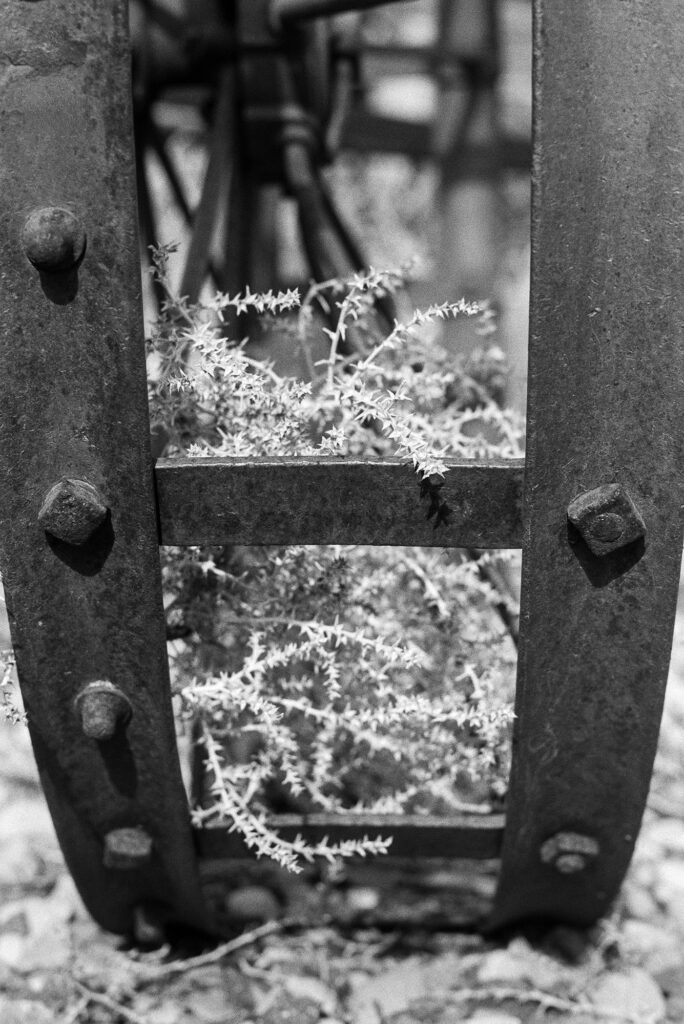
Available exposure modes depend on the type of lens attached. With Pentax-A or Pentax-F series lenses are used, there is a full program mode available. When the appropriate lens’ aperture ring is set to “A”, the letter P shows in the top left of the viewfinder. This is the full program mode in which the camera chooses the shutter speed and aperture. One would think that the shutter speed dial would also need to be set at “A”, but it doesn’t matter.
Aperture-Priority mode is also available, even with the earlier K-mount lenses such as the Pentax-M series. With the shutter speed dial set to “A”, and the aperture ring set to the desired aperture, the camera will choose the appropriate shutter speed.
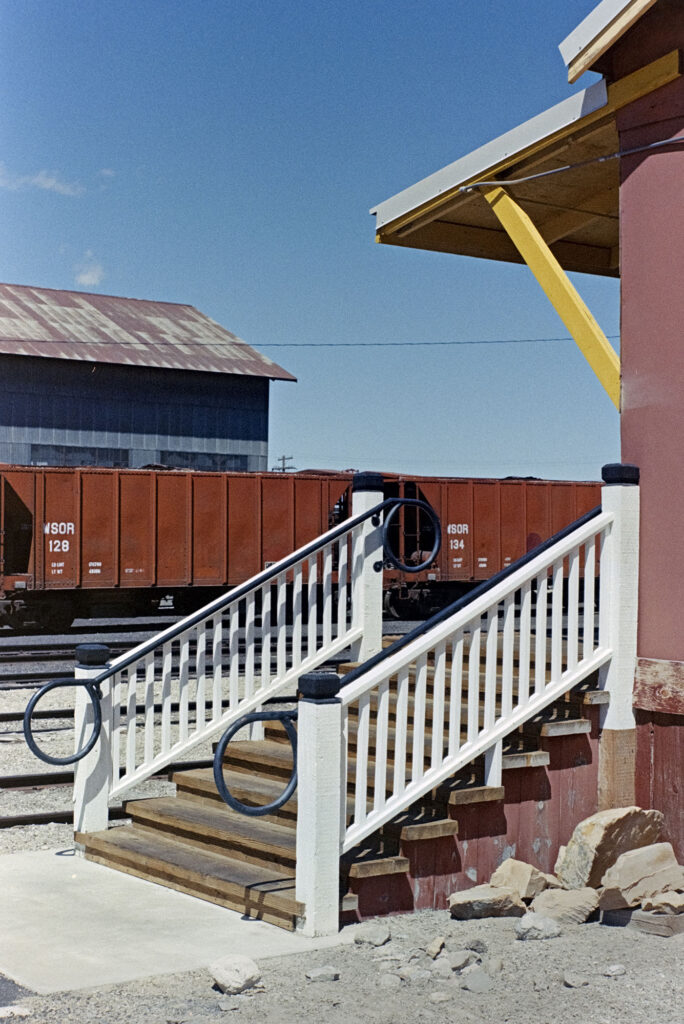
There is a metered manual mode as well, which allows for the greatest level of control. With both the aperture ring and the shutter sped dial set manually, the letter “M” appears in the viewfinder. The recommended shutter speed for the set aperture blinks in red, while the speed set on the dial is visible in green. The appropriate exposure, according to the meter, occurs when the set shutter speed matches the recommended speed.

I find myself using aperture-priority more often than not. Manual mode is great for when creative control or lighting conditions demand a deliberate departure from the metered value, such as a backlit scene, or silhouettes, bright beaches or snowy scenes. The meter is center-weighted and can be fooled by those conditions. There is no exposure compensation option in automatic modes. In these situations either the Memory Lock option in auto modes or metered manual mode should be used.
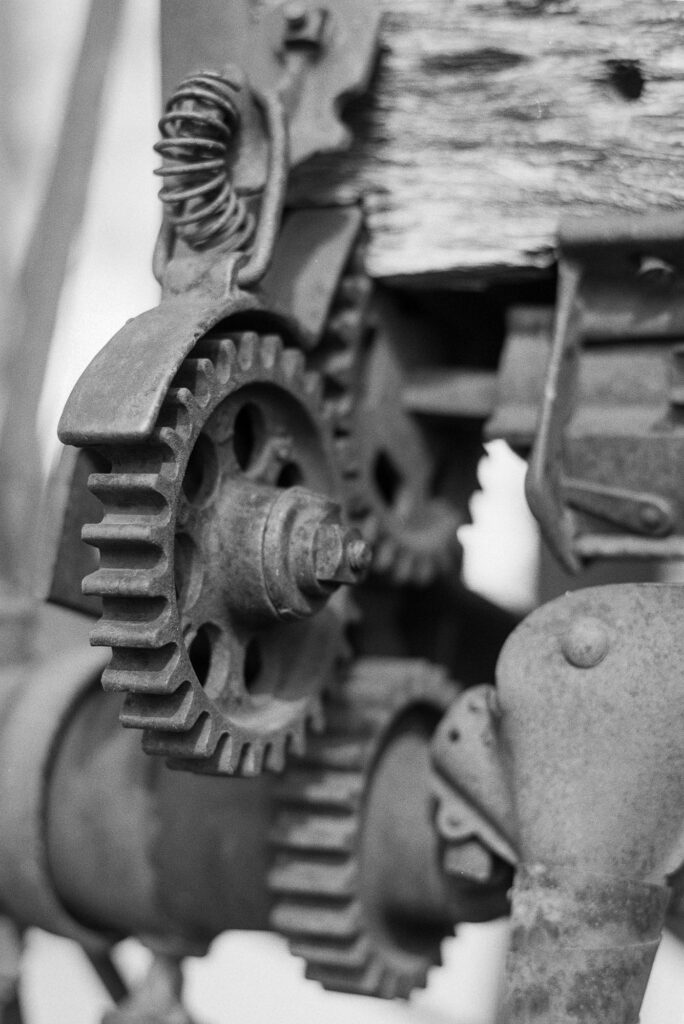
Carrying this camera on a recent trip though Nevada, I was able to shoot a couple of rolls. My user experience was very positive. Even though it is largely plastic, if feels quite solid in the hand. Fit and finish are remarkably good, and it inspires confidence. All controls worked perfectly, and the the images were just fine. I experienced zero failures and I really enjoyed carrying this little gem.
The gun-metal gray finish on top and bottom give the camera a modern look, departing somewhat from the silver or black options on many other cameras. Overall it is a handsome camera.

Film loading couldn’t be easier. One drops the film cartridge in place, pulls the leader out to the red mark, closes the back, releases the shutter and advances the film a couple of times. There is no futzing about with feeding the leader through slots in the take-up spool. As somebody who uses a lot of different cameras, each with its own film loading proclivities, I appreciate the simplicity of it all.
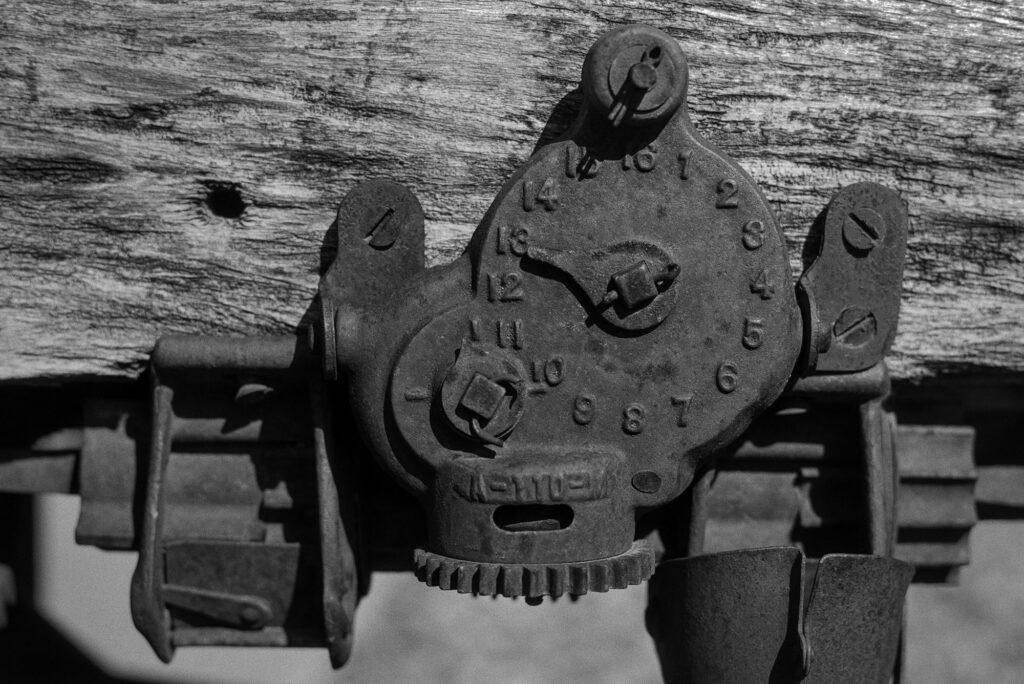
I still have the habit of turning the rewind knob clockwise to take up the slack in the film in the cartridge just after loading. For the first few frames I make sure that the rewind knob turns as I advance the film. Many a beginner has shot 37, 38, 39 photos or more, only to realize that the film had not been advancing. Then came the profanity.

Notably absent is the ASA dial, and I would really prefer that to be manually controlled. The ASA (film speed, or ISO) is automatically set with DX coding on the film canister. There are contacts visible inside the film chamber that read the film speed and set it in the camera accordingly. For somebody like me that hand-rolls film in non-DX coded cartridges, this is a problem if I use anything but ASA 100 film.
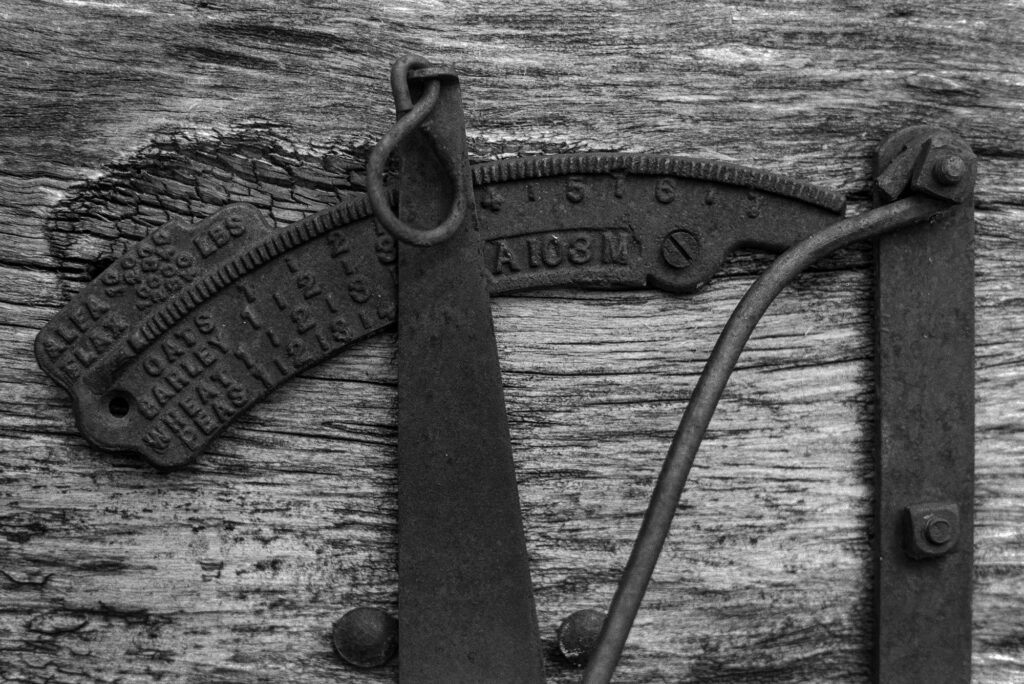
Another oddity is the flash sync setting on the shutter speed selector dial. This camera will synchronize with a flash at 1/100 second and below. It’s an odd speed, but a bit higher than many cameras that sync at 1/60. Still , it is not particularly generous for a vertical metal shutter.

All cameras have their pros and cons, and this one is no different. Overall I quite enjoyed this camera, as it has just about all I need and it is easy to use. For a beginner still relying on automatic exposure, this camera delivers. That same beginner can manipulate those controls in manual mode and learn the relationship between aperture and shutter speed. A more advanced aficionado will find this to be an easy camera to use, with all the creative options available.

Specs:
Designation: Pentax P30t 35mm SLR
Introduced: 1990
Manufactured: China
Weight: 496g (17.5 oz), body only
Shutter: Vertical, metal blade
Shutter Speed range: 1-1/1000 second plus bulb and flash sync (1/100)
Exposure Modes: Program (with select lenses), Aperture Priority, and Metered Manual
Flash Sync: 1/100 second
ASA range: 25-1600, DX coded only
Hot shoe: Yes
Meter: Center-weighted with recommended and set shutter speeds visible in viewfinder
Battery: 2 x A76 or SR44 1.5v button batteries
Self-Timer: Yes
DOF Preview: Yes
Mirror lockup: No

